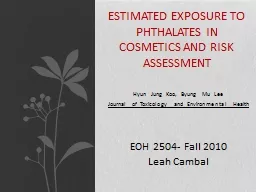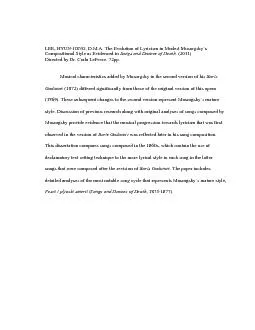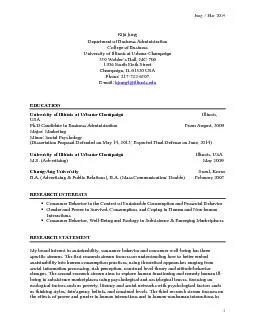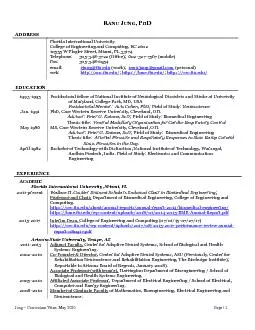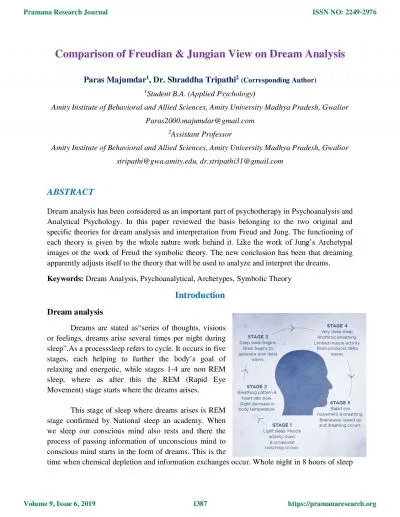PPT-Hyun Jung Koo, Byung Mu Lee
Author : liane-varnes | Published Date : 2018-11-10
Journal of Toxicology and Environmental Health EOH 2504 Fall 2010 Leah Cambal Estimated exposure to phthalates in cosmetics and risk assessment Background on Phthalates
Presentation Embed Code
Download Presentation
Download Presentation The PPT/PDF document "Hyun Jung Koo, Byung Mu Lee" is the property of its rightful owner. Permission is granted to download and print the materials on this website for personal, non-commercial use only, and to display it on your personal computer provided you do not modify the materials and that you retain all copyright notices contained in the materials. By downloading content from our website, you accept the terms of this agreement.
Hyun Jung Koo, Byung Mu Lee: Transcript
Download Rules Of Document
"Hyun Jung Koo, Byung Mu Lee"The content belongs to its owner. You may download and print it for personal use, without modification, and keep all copyright notices. By downloading, you agree to these terms.
Related Documents

